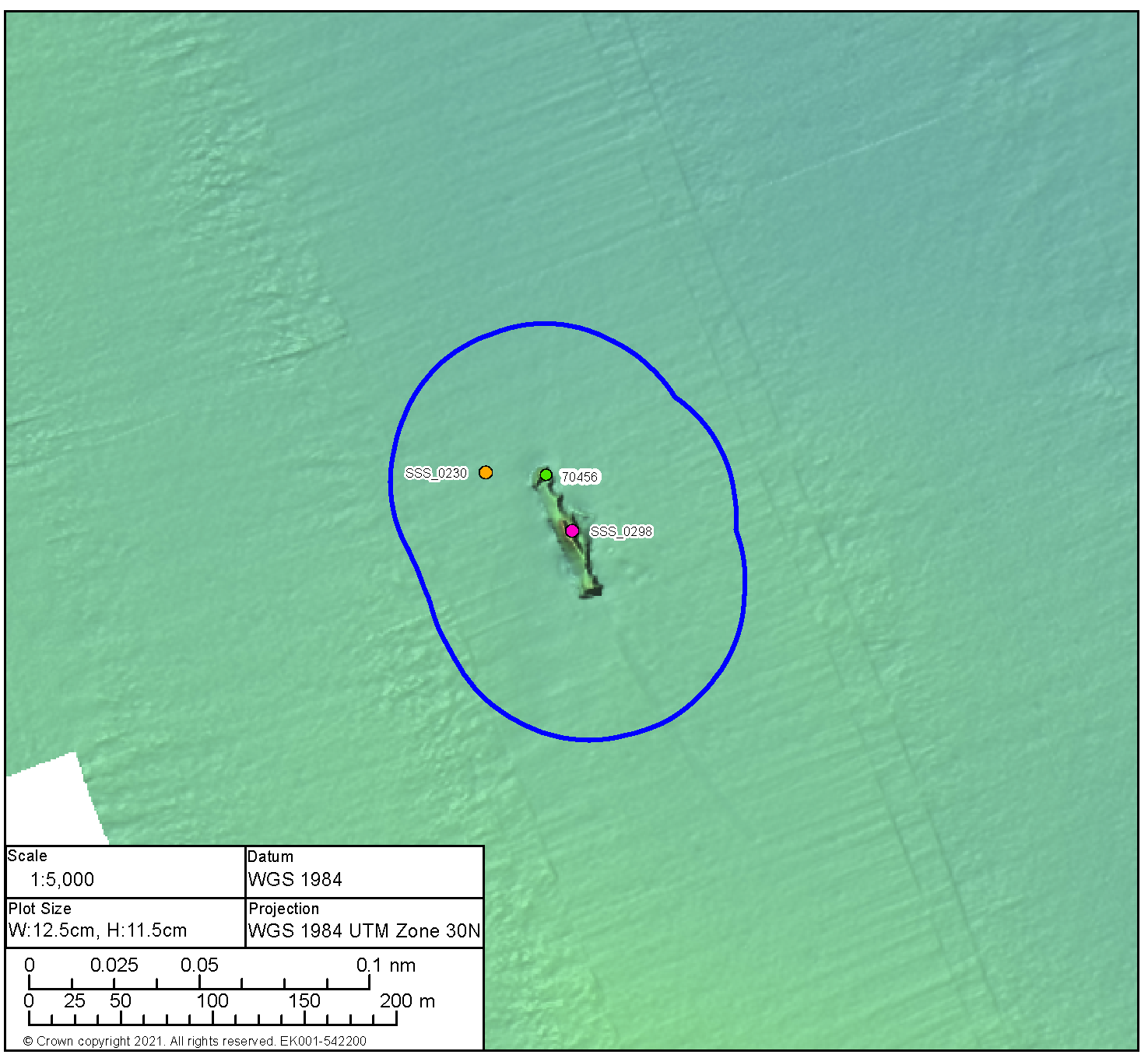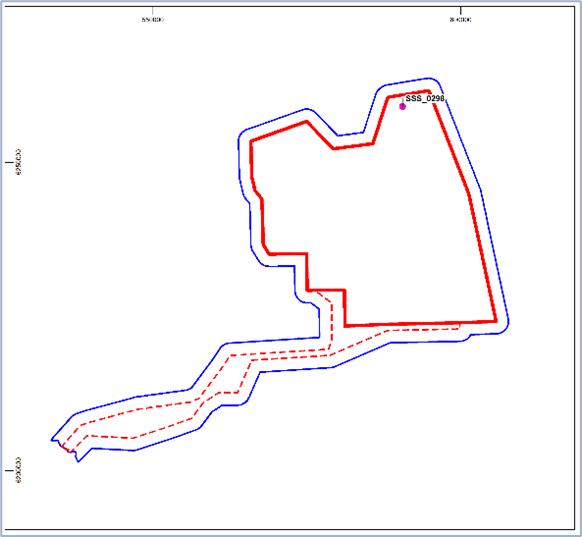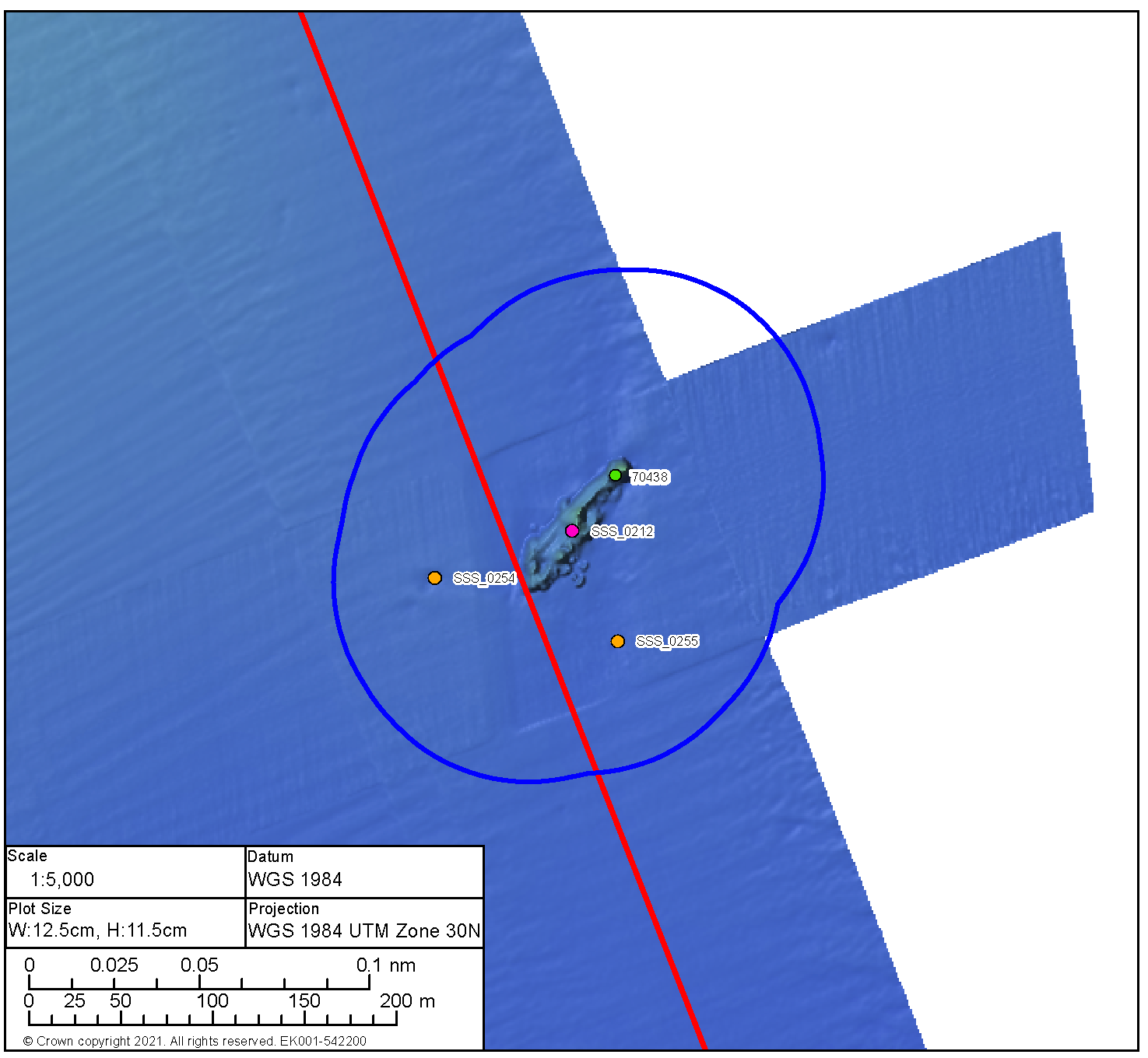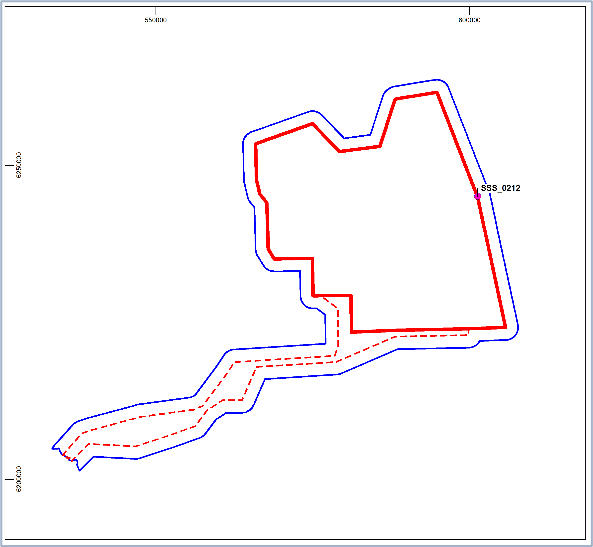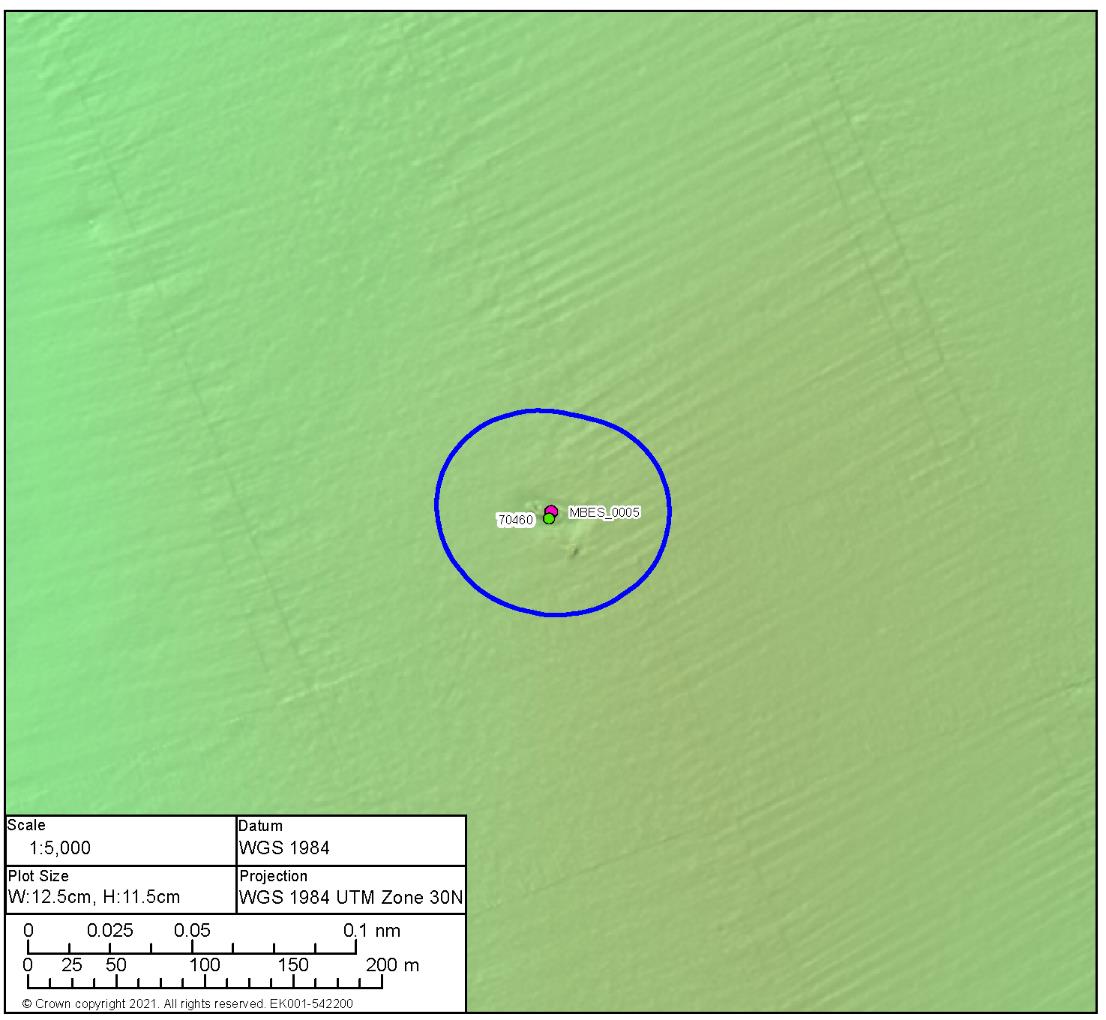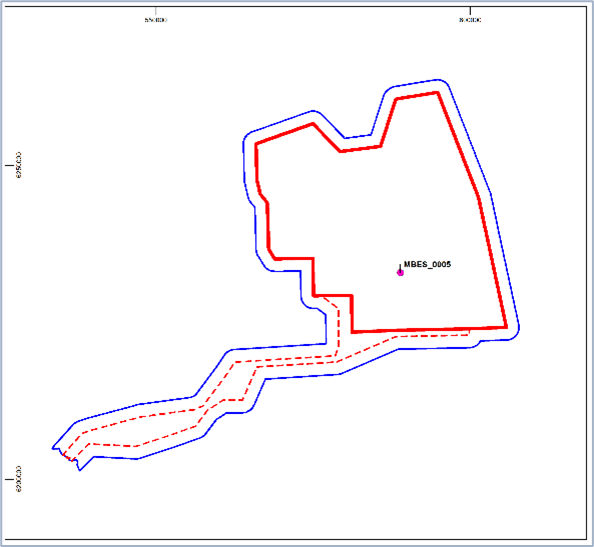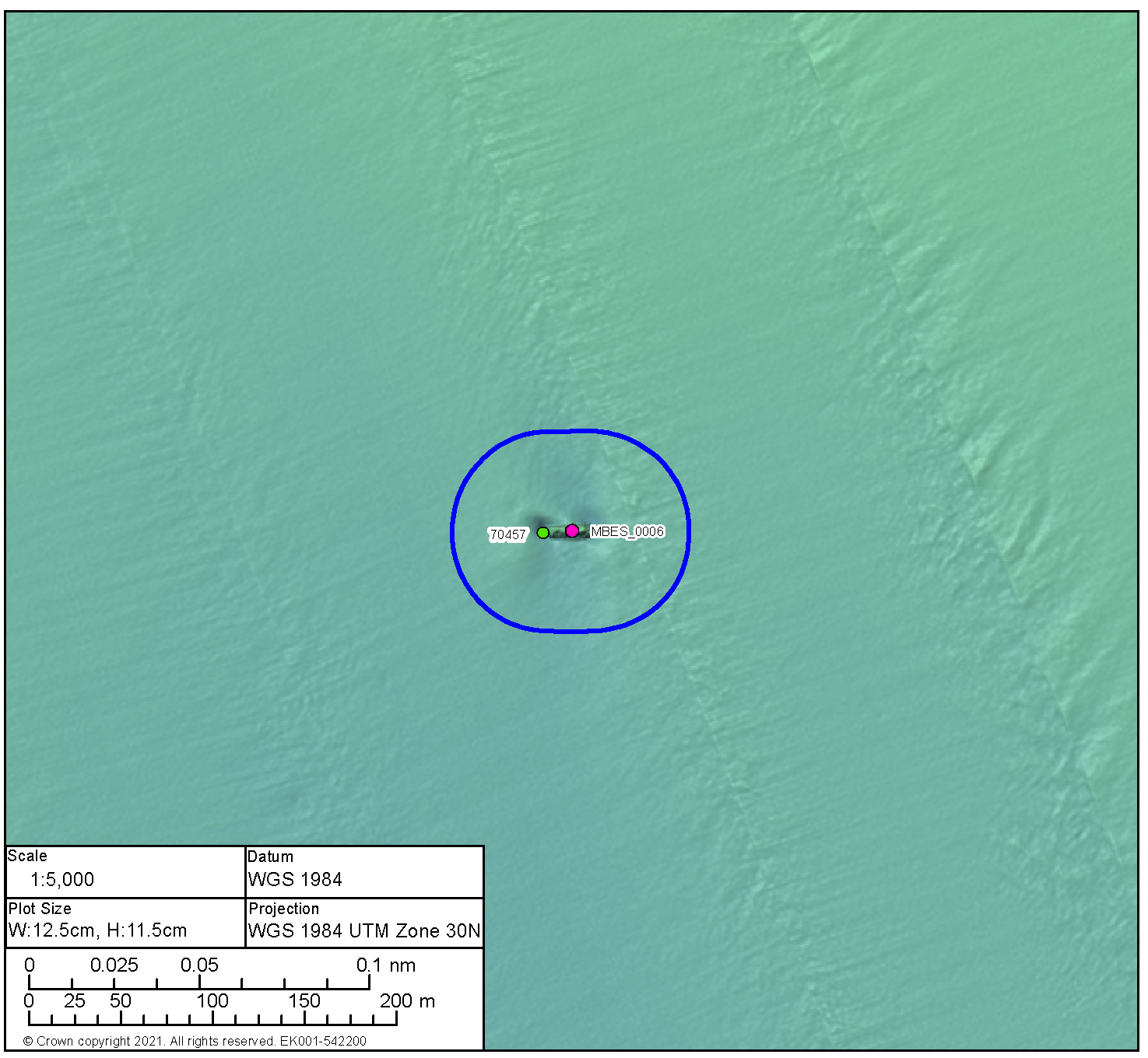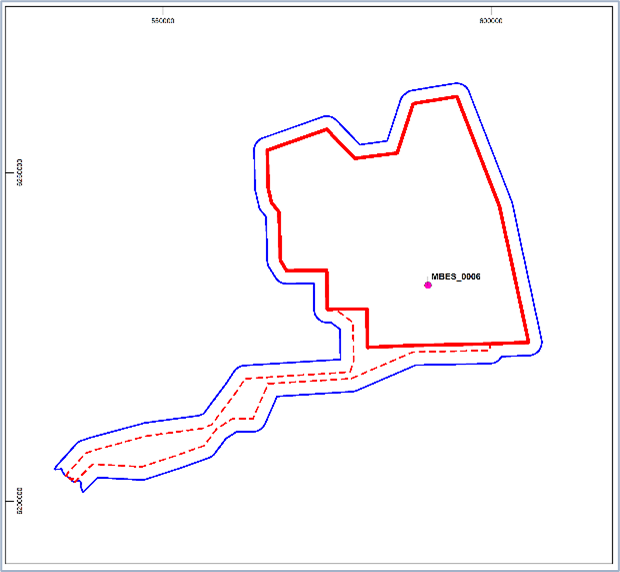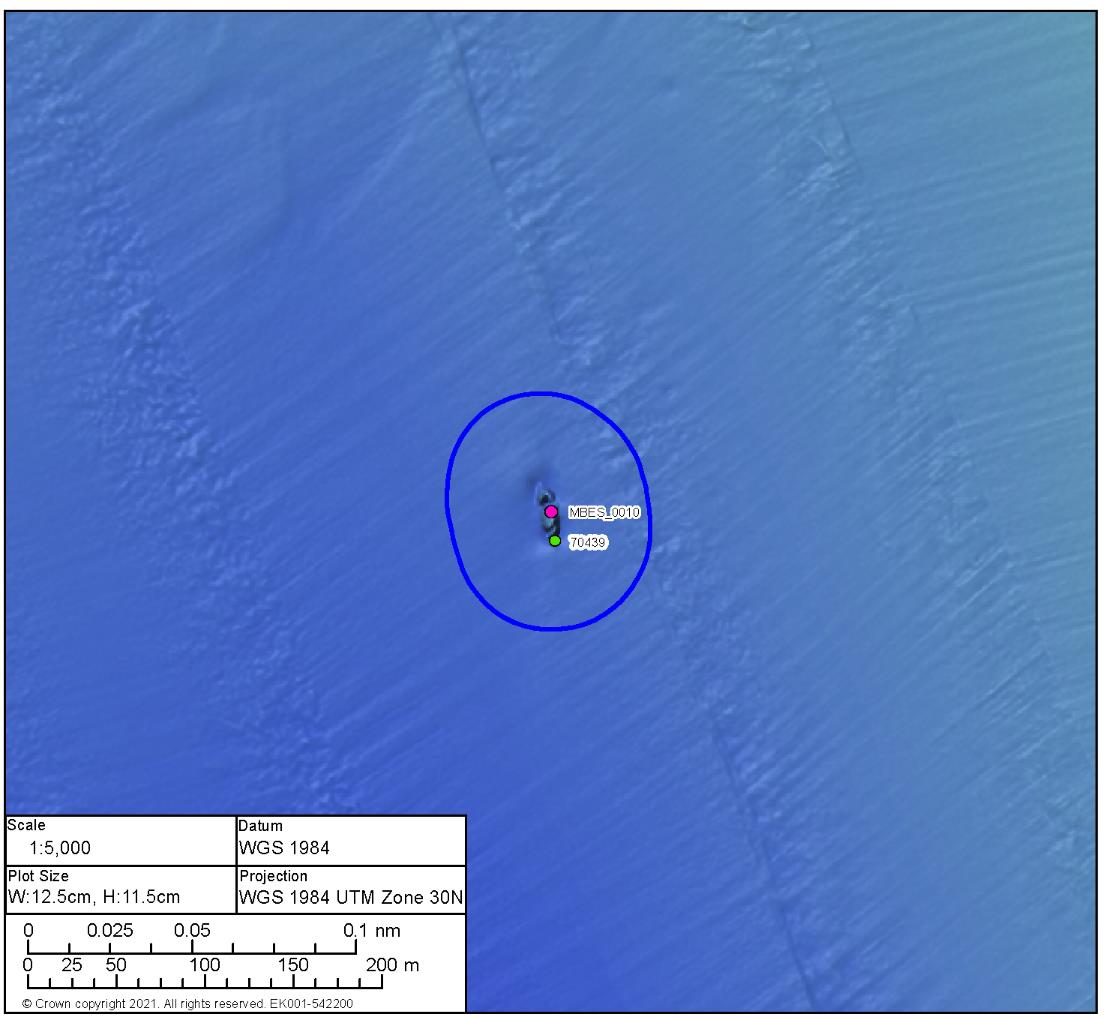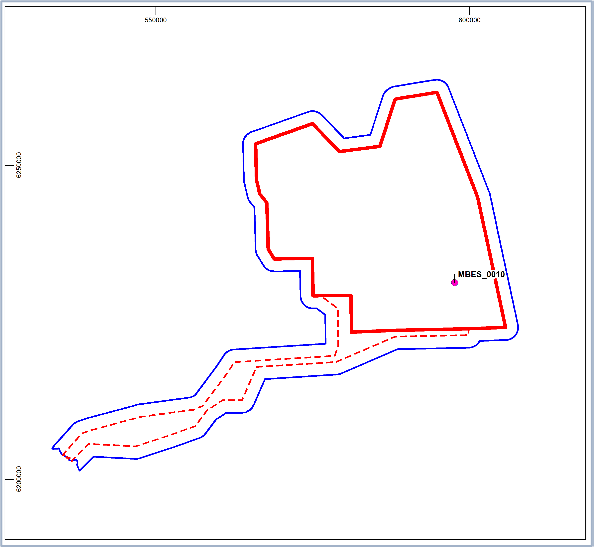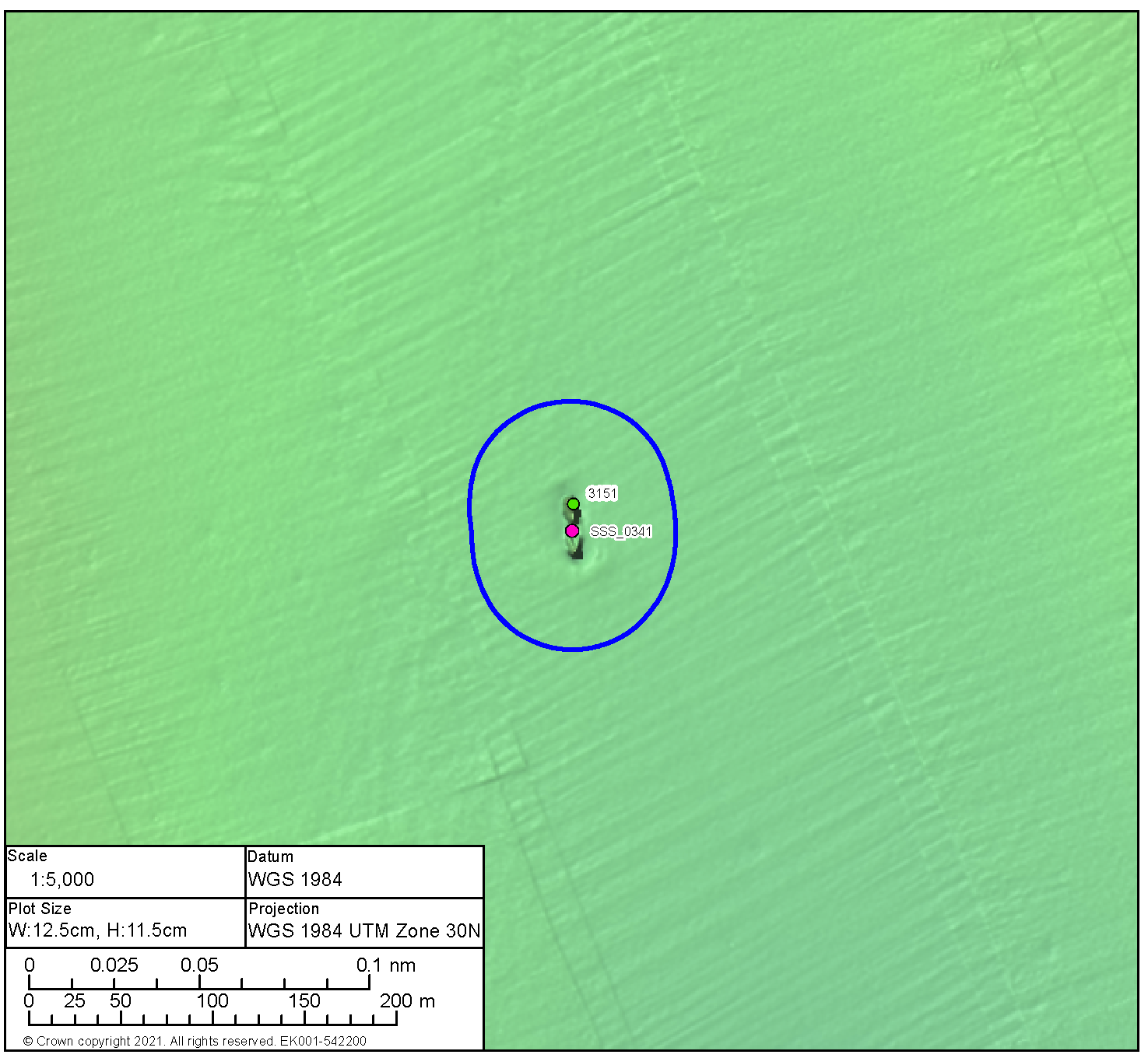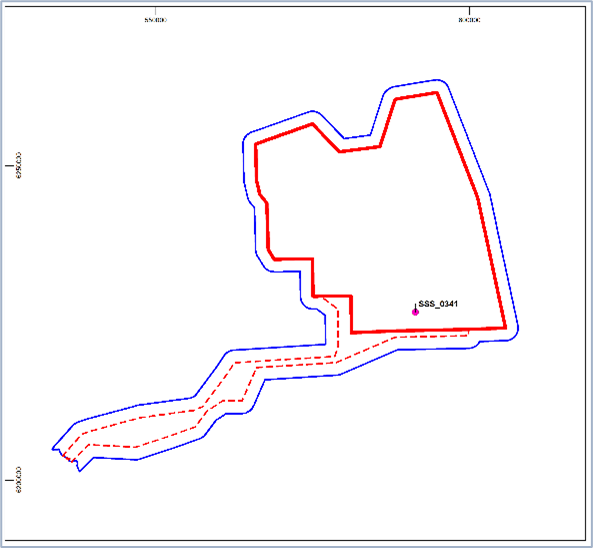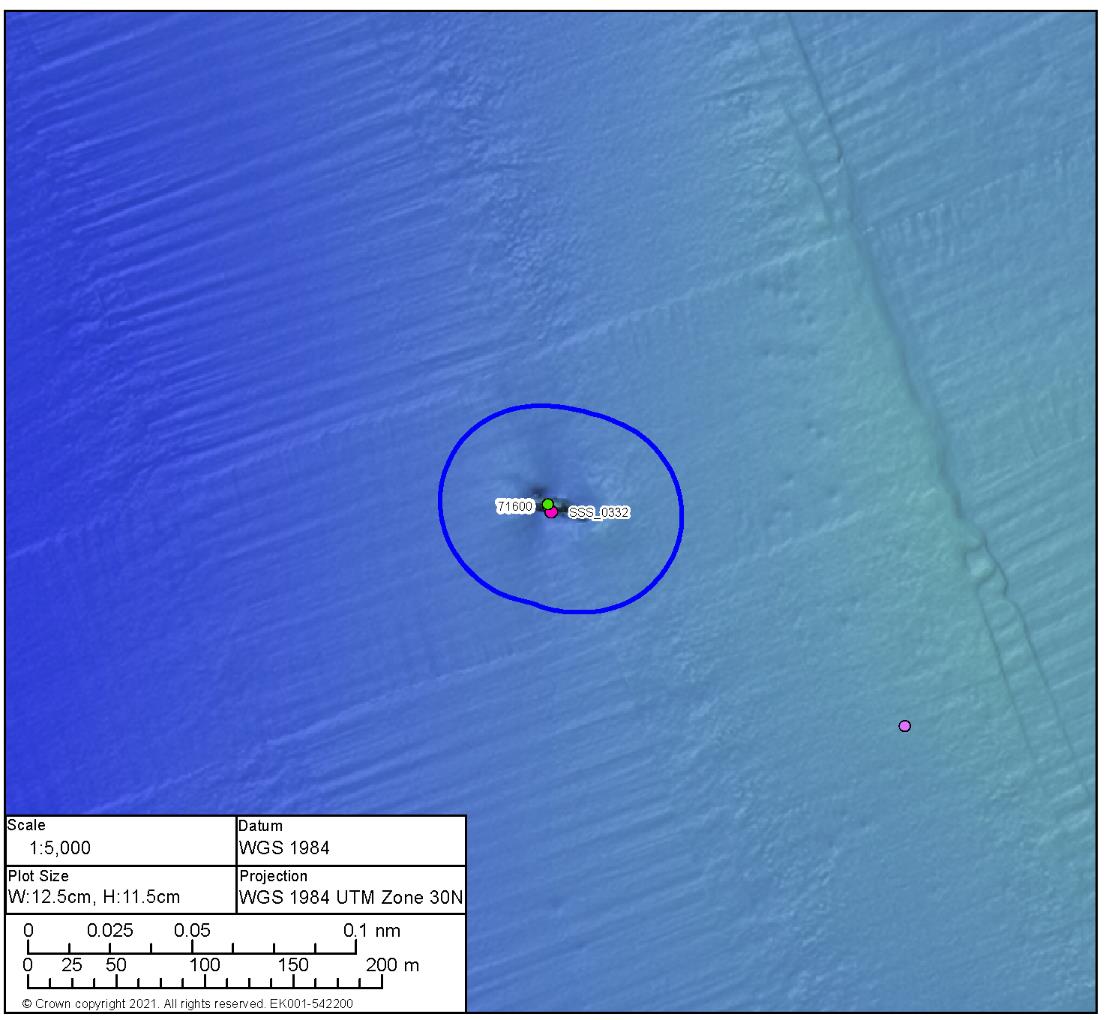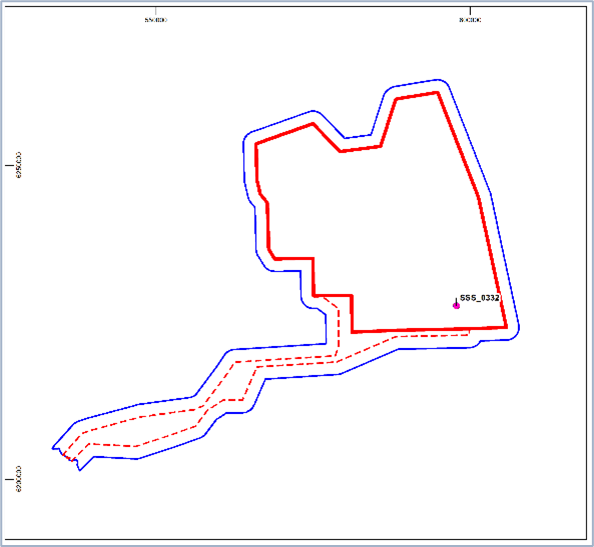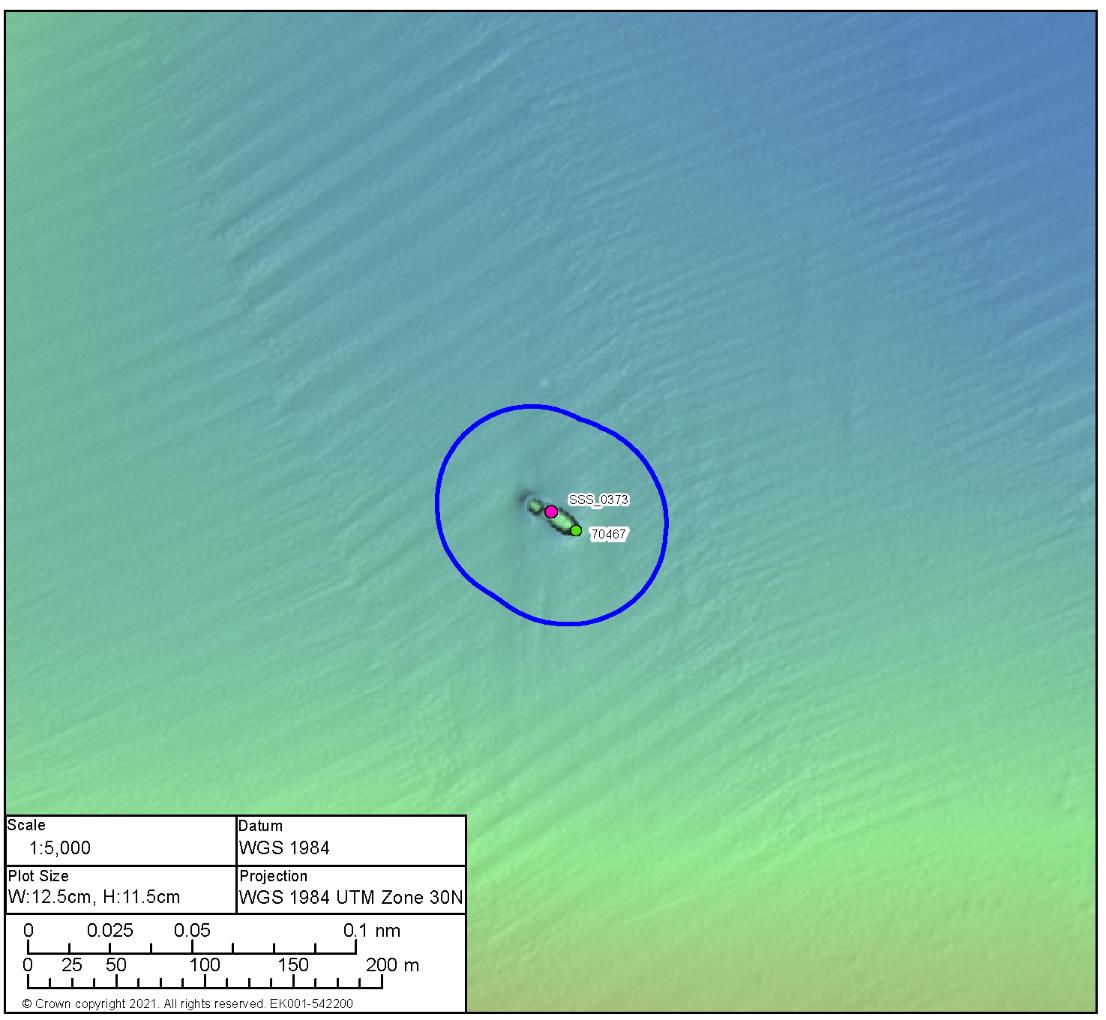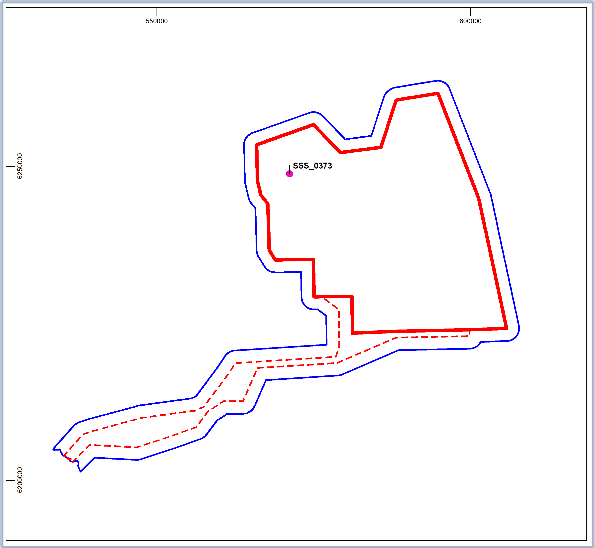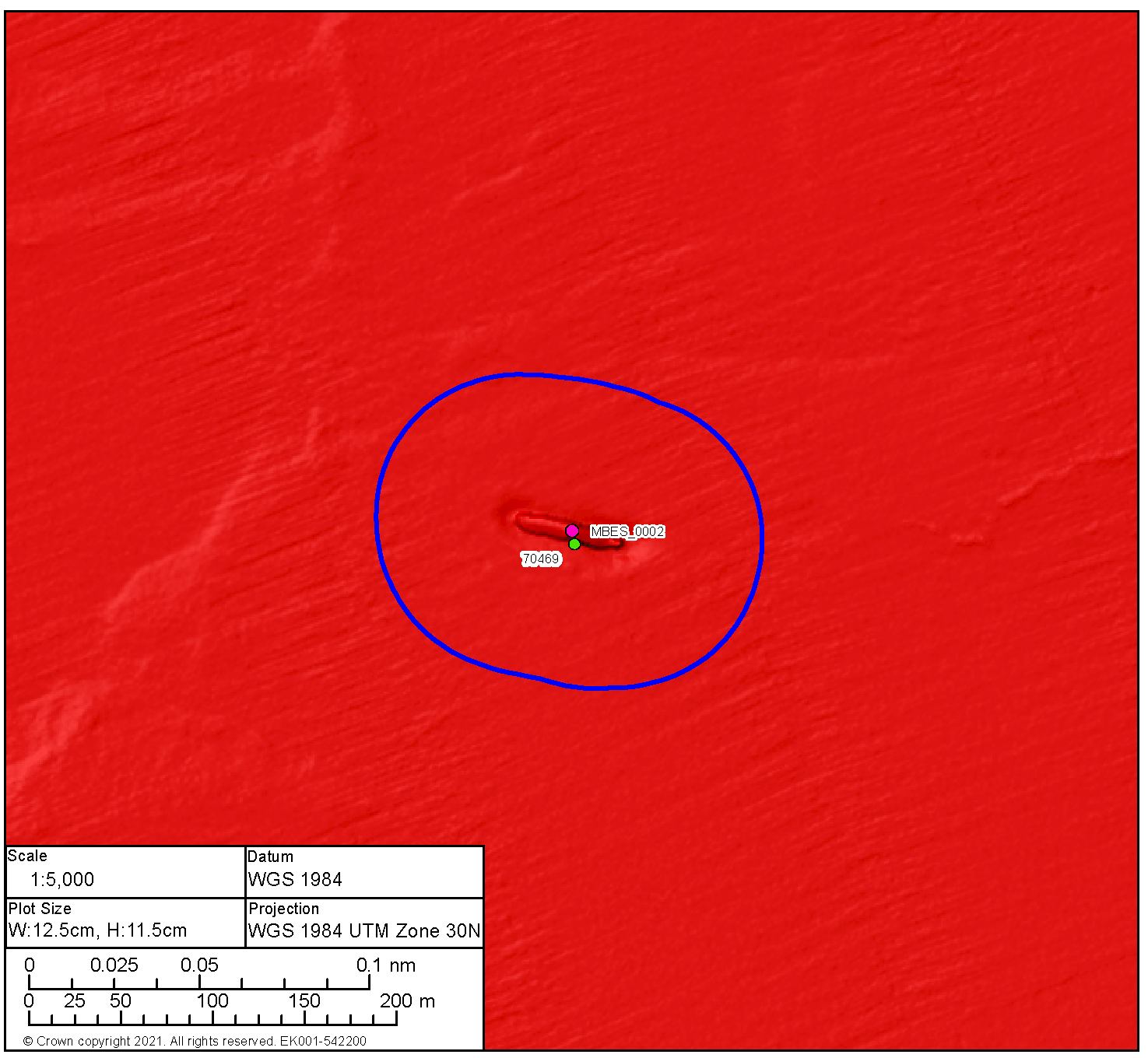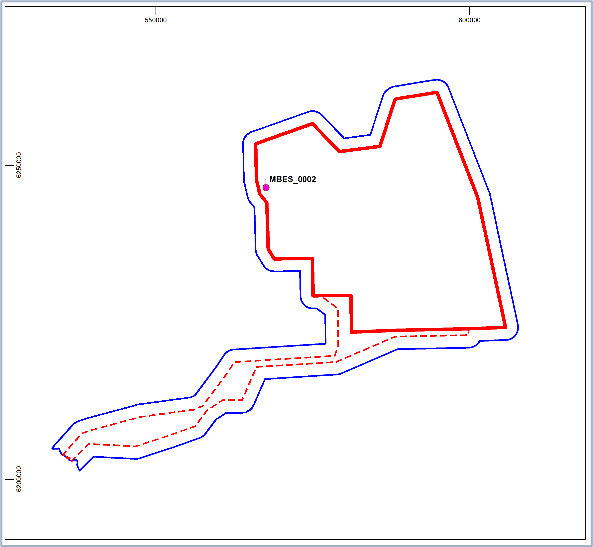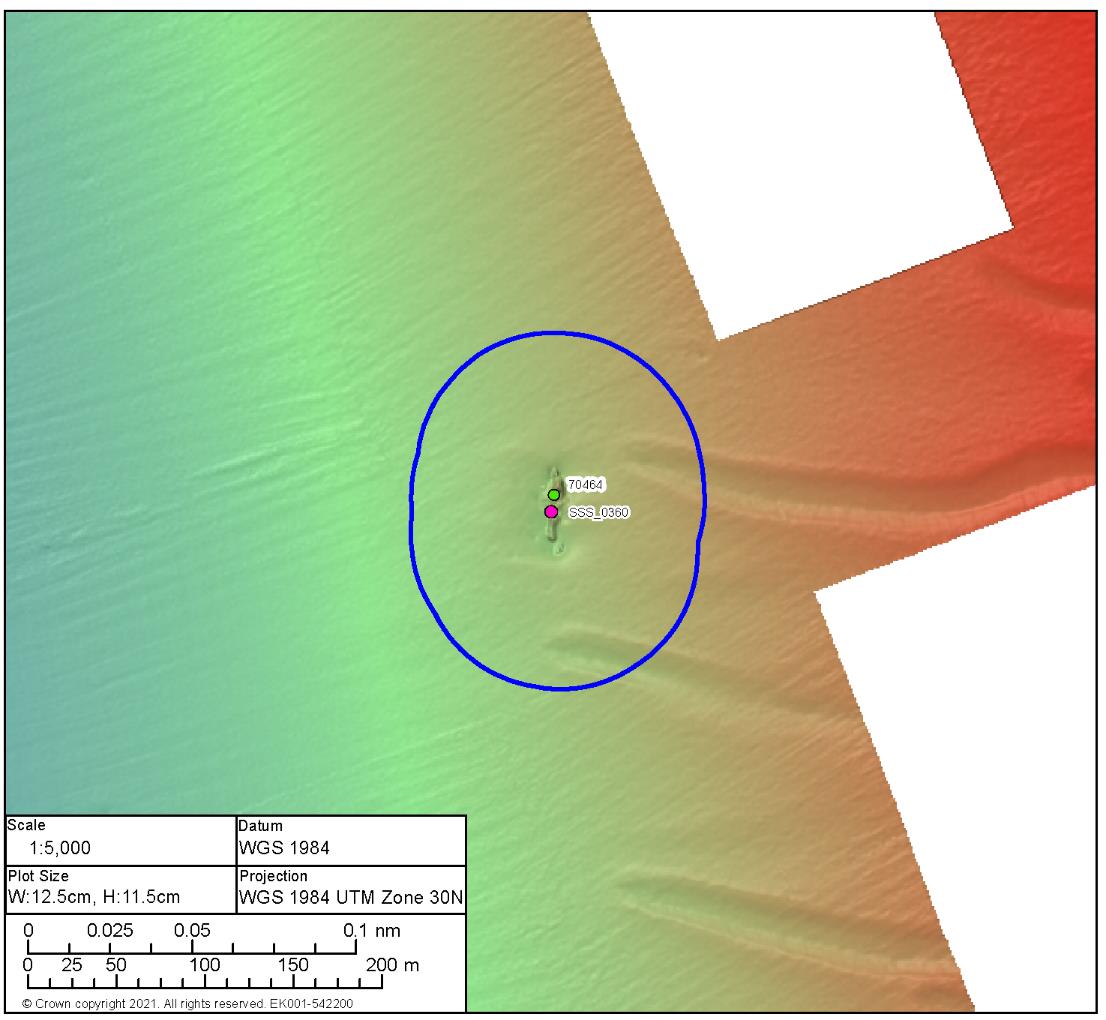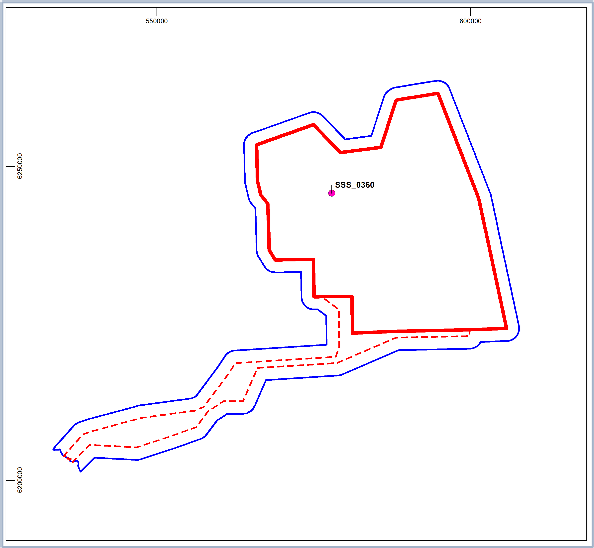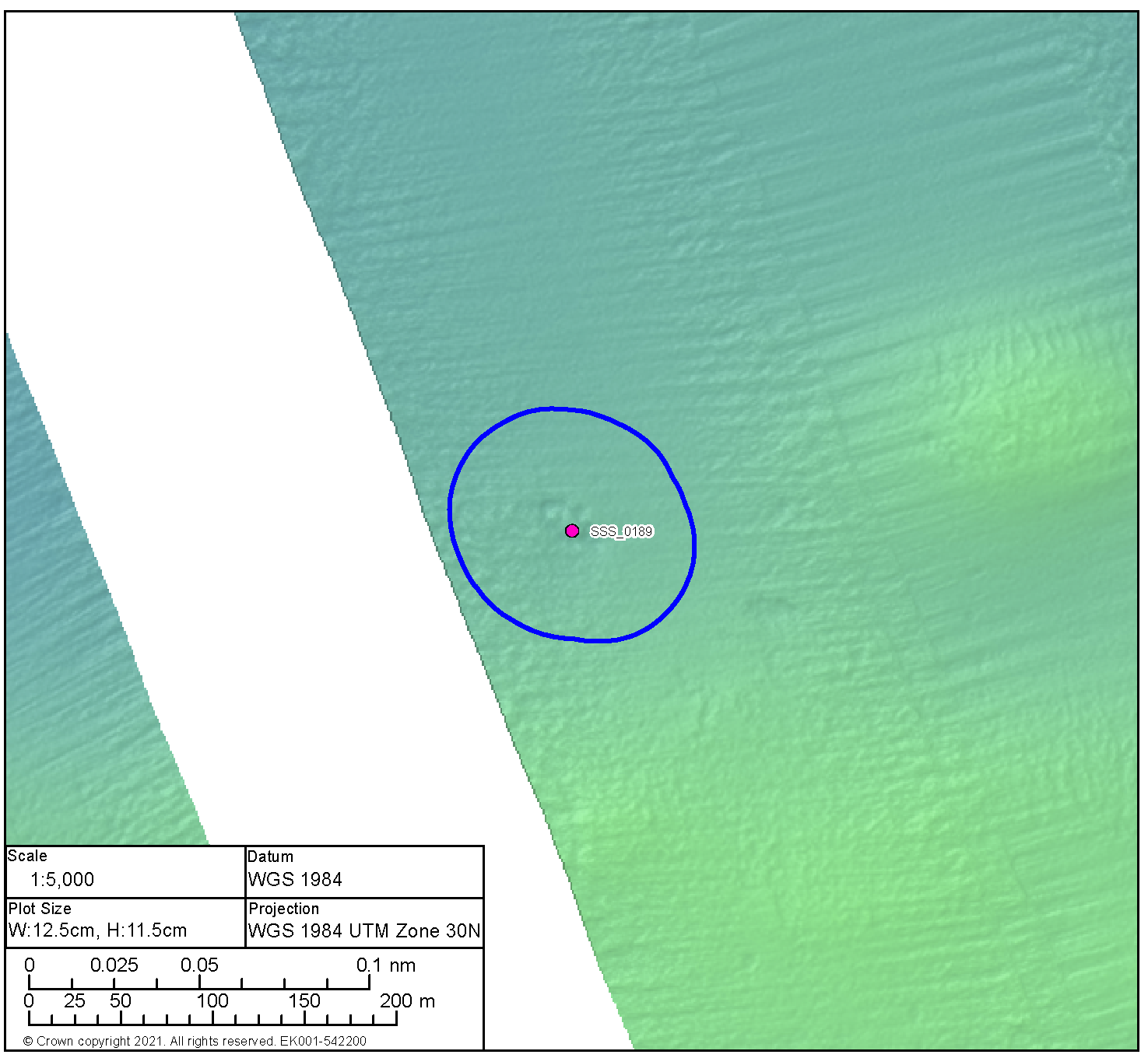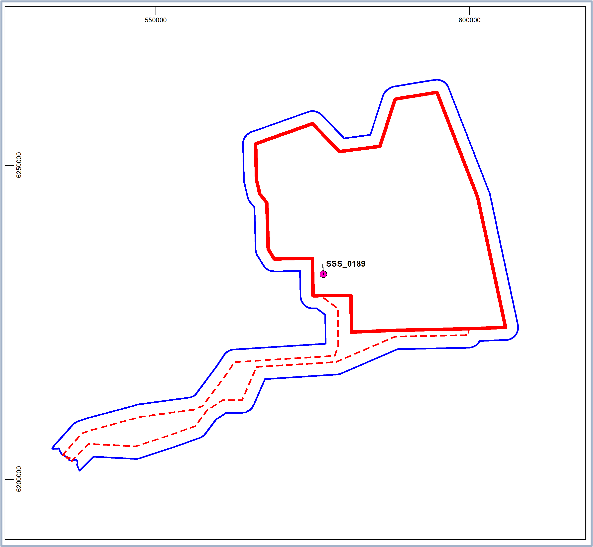14. Reporting
- All archaeological reports will be prepared in accordance with the guidance given in the relevant Chartered Institute for Archaeologist’s Standards and Guidance. Reports will typically include:
- a non-technical summary;
- the aims and methods of the work;
- the results of the work including finds and environment remains;
- a statement of the potential of the results;
- proposals for further analysis and publication; and
- illustration seabed cultural heritage anomalies Cs and appendices to support the report.
- Each draft report will satisfy the Method Statement for that particular investigation. The RA will forward a hard copy and digital (pdf) copy of each report to the Archaeological Contractor and the Applicant.
- All archaeological reports (inclusive of geophysical and geotechnical investigations) produced during the development and construction process will be submitted to OASIS (Online Access to the Index of Archaeological Investigations).
- Decisions regarding the level of post-excavation work required will be taken following submission of investigative reports and consultation with the Archaeological Curator.
- An overarching final report on the archaeology of the Proposed Development site will be produced by the RA after the completion of the archaeological works relating to the Proposed Development. If little of significance is found during the construction phase, a final report on the investigative work will be prepared by the RA/Archaeological Contractor within 6 weeks of works being completed. The final report will establish final arrangements for publication.
14.1. Publication
- Subject to the assessment report the RA/Archaeological Contractor will publish the results of fieldwork, at least to summary level, within one year of completion of the work. Publication will be in an appropriate local or national journal. Other forms of publication (e.g. popular publication/internet) may be employed where appropriate.
- Publication media and all publication matters will be discussed and agreed in advance with the Archaeological Curator.
14.1.2. Archives
- The Archaeological Contractor will be notified of any archaeological investigations in advance and any specific requirements related to the preparation and deposition of Proposed Development archives will be accommodated as appropriate.
- Where there is the likelihood of any archaeological investigations, the RA will contact an appropriate receiving institution to discuss the intended fieldwork and seek its agreement to accept the site archive for long-term storage and curation. The RA will consult with the receiving institution with regard to its policy on the selection, retention and disposal of archaeological material and t confirm the requirements in respect of the format, presentation and packaging of archive records and materials.
- The RA will notify the receiving institution in advance of any fieldwork, and a museum accession number will also be sought on each occasion. The timetable for depositing archives with the receiving institution after completion of the post-fieldwork programme will be set out in the relevant Method Statement.
- The final Archaeological Report should be archived with the National Record of the Historic Environment (NRHE). An OASIS form will be produced for each Deemed Marine Licence and all copies of any reports generated (e.g. geophysical, geotechnical data analysis) and agreed with the relevant curatorial body are to be attached as data files in compliance with the appropriate standards. A copy of the final reports will be submitted to Scottish Borders, East Lothian and Fife Historic Environment Record
- The Applicant will seek permission from Crown Estate Scotland to donate finds to an appropriate Museums Service prior to depositing the archive.
15. Arrangements for Monitoring and Reviewing the WSI
- At each stage of the Proposed Development including construction, operation and maintenance and decommissioning and sub-stages therein, the RA will advise the Applicant as to the potential requirements for the specific archaeological investigations as outlined in this document. Appropriate Method Statements will be prepared as required in line with the requirements of the WSI and these will be submitted to MS-LOT for onward submission to the Archaeological Curator for approval. Approval by the Archaeological Curator will be assumed if no response is received within 30 working days of submission.
- These Method Statements will include provision for the Archaeological Curator to monitor the progress of the archaeological investigations as appropriate to that element, be that through site visits or meetings with the Applicant, the Contractor and/or the RA.
- Provision will be made for the WSI and PAD to be revised as appropriate should elements of the Proposed Development change (within the maximum design scenario) or particular archaeological issues come to light. Any revisions will be prepared by the RA and submitted to the Applicant who will ensure they are submitted to MS-LOT for onward submission to the Archaeological Curator. Approval by the Archaeological Curator will be assumed if no response is received within 30 working days of submission.
- The performance of the WSI and PAD will be monitored through the provision of a series of Archaeological Reports prepared to inform on the results of various activities undertaken under its auspices. These include a review of new geophysical, geotechnical and environmental data and the implementation of the PAD (appendix A). These reports will be submitted to the Applicant who will ensure dissemination to MS-LOT Team and onward submission to the Archaeological Curator.
- The Applicant and the RA will agree the system for Archaeological Reporting.
- MS-LOT, as the first point of contact for consultation on archaeological matters relating to the fulfilment of the Marine Licence, will be notified in advance by the Applicant/RA of work timetables and the commencement of any work on site that may affect the site’s archaeology and will be informed at this time of the RA’s key staff. A programme of monitoring visits (if appropriate) by the Archaeological Curator will be agreed in advance of the commencement of construction activities and again as appropriate during operation and maintenance and decommissioning activities.
- The Applicant will be kept informed of any contact between the RA and the Archaeological Curator.
16. References
BMAPA and English Heritage (2005). Protocol for reporting finds of archaeological interest. British Marine Aggregate Producers Association and English Heritage, London
Chartered Institute for Archaeologists (2014a). Standard and Guidance for Archaeological Field Evaluations.
Chartered Institute for Archaeologists (2014 b). Standard and Guidance for an archaeological watching brief.
Chartered Institute for Archaeologists (2014c). Standard and guidance for the collection, documentation, conservation and research of archaeological materials.
Chartered Institute for Archaeologists (2014c). Standard and Guidance for nautical archaeological recording and reconstruction.
Collaborative Offshore Wind Research into the Environment (COWRIE) (2007). Historic Environment Guidance for the Offshore Renewable Energy Sector.
English Heritage (1998). Identifying and Protecting Palaeolithic Remains; Archaeological Guidance for Planning Authorities and Developers. English Heritage, London
English Heritage (2002). Military Aircraft Crash Sites: Archaeological guidance on their significance and future management. English Heritage, London.
Gribble, J., and Leather, S. for EMU Ltd. (2010). Offshore Geotechnical Investigations and Historic Environment Analysis: Guidance for the Renewable Energy Sector. Commissioned by COWRIE Ltd (project reference GEOARCH-09).
Historic England (2013). Marine Geophysics Data Acquisition, Processing and Interpretation Guidance Notes.
Robinson (1998). First Aid for Underwater Finds.
SSER (2022a) Berwick Bank Wind Farm Onshore EIA Report
The Crown Estate and Wessex Archaeology (2014). Protocol for Archaeological Discoveries. Offshore Renewables Projects. The Crown Estate.
The Joint Nautical Archaeology Policy Committee (JNAPC) (2008). Code of Practice for Seabed Development. The Joint Nautical Archaeology Policy Committee.
Watkinson (1998). First Aid for Finds.
Wessex Archaeology (2008). Aircraft Crash Sites at Sea: A Scoping Study. Archaeological Desk-based Assessment.
17. Appendices
17.1. Appendix A: Protocol For Archaeological Discoveries
This document is a protocol that will satisfy conditions relating to the reporting of archaeological discoveries that might be made in association with works undertaken for the Proposed Development. It is adapted from The Crown Estate’s ‘Protocol for Archaeological Discoveries: Offshore Renewables Projects’ (2010).
The PAD is a system of monitoring for unexpected or incidental finds relating to the historic environment that may be encountered within the marine (and inter-tidal zones). This PAD can be used at all stages of the development process where archaeological information may be obtained, including all pre-development surveys such as benthic sampling, obstruction surveys and other such operations.
This Protocol is intended to satisfy any conditions that relate to reporting protocols included on consents administered by marine licensing authorities including Marine Scotland - Licensing Operations Team. Where implementation of this Protocol is a condition of consent, failure to follow the Protocol may give rise to a breach of condition.
COWRIE’s Historic Environment Guidance for the Offshore Renewable Energy Sector (2007) document states: “The aim of protocols for unexpected discoveries is to reduce any adverse effects of the Proposed Development upon the marine historic environment by enabling people working on the Proposed Development to report their discoveries or recovered material rapidly in a manner that is convenient and effective. The protocol will set out the respective responsibilities of the developer, main contractors, and archaeological contractors/consultants. The Protocol therefore provides a mechanism to aid compliance with the Merchant Shipping Act 1995 in respect to recovery of ‘wreck’, as defined by the Act and reporting of military vessel and aircraft wrecks to the Ministry of Defence.”
This Protocol applies to things that are or may have been made, used or affected by people. This will include, for example, fossilised remains from periods of human inhabitation, but not fossils that are exclusively pre-human in origin. It will not include finds of geological, ecological, or other non-archaeological origin, unless a link to human activity can be assumed.
This Protocol takes into account, and is consistent with, existing statutory and non-statutory regimes for reporting discoveries, ownership of finds and other legal regimes, on land, within territorial waters and outside territorial waters.
For some classes of find there are specific legal requirements (e.g. treasure, wreck, human remains); see Appendix 1. These legal requirements will be met by following this Protocol. In such instances, failure to follow the Protocol may also give rise to a criminal offence.
Where ordinance is concerned, specific rules have been put in place by the Applicant or its contractors. These rules are required for the safe conduct of construction and installation operations and must take precedence over this Protocol. Historic ordinance may, however, also be of archaeological interest and can be reported under this Protocol once local rules for ordnance have been satisfied.
A.2 Outline
Archaeological finds made in the course of construction and installation activities can shed light on past human use of the landscape, sea and seabed. The information that such discoveries bring to light can help archaeologists better understand society and human endeavour in the past, and better protect significant aspects of our history on behalf of future generations.
The Protocol is applicable to activities associated with the Proposed Development where an archaeologist is not present on site and therefore not immediately available. In cases where the Applicant has made provision for an archaeologist to be on site, as part of a site Investigation, watching brief or specific archaeological works, then the archaeological Method Statement relating to this provision will take precedence. Where no specific archaeological provision has been made, then this Protocol will apply.
This Protocol addresses finds of archaeological interest made on the seabed or onboard vessels. They may be identified as a result of geophysical survey, ROV or diver visual identification or through coming into contact with anchors, grapnels, jack-up legs or other seabed equipment. These finds or anomalies may indicate that an object or structure of archaeological interest has been encountered on the seabed.
The definition of an archaeological “find” in this context is of an object or site with archaeological potential or significance. It does not refer just to items brought to the surface. An archaeological “site” is a group of features or objects that make up a relatively discrete collection of associated archaeological objects. This could be a shipwreck, structure, or other archaeological assemblage (see Appendix 2).
An “anomaly” is distinct from a find or site and is a signature that could be visual or digital (e.g. geophysical) that indicates a possible find or site. Further investigation may reveal that it is not of human origin or is too modern to be of archaeological interest. However, until such investigation takes place it must be considered as a source of possible archaeological interest.
The Protocol anticipates discoveries being made by Project Staff, who report to a Site Champion on their vessel or site (usually the senior person on site), who then reports to a person (the Nominated Contact) who has been nominated by the Applicant to co-ordinate implementation of the Protocol. The Nominated Contact will in turn inform the Developer’s Project Manager(s) (if this is not the Nominated Contact) who in turn will contact the RA.
The response to reported finds will be implemented through the measures set out in the Protocol and may include further survey or the establishment of TAEZs, which may be converted into new AEZs, if warranted. Any action to implement new, or to amend agreed AEZs or TEZs will only be done in agreement with the appropriate Archaeological Curators and the Regulator responsible for consenting the Proposed Development
A.3 Roles and responsibilities
The Site Champion is the person formally appointed by the Developer to be directly responsible for implementation of the Protocol and producing reports arising from a particular activity location. The Site Champion could be a Vessel Master, a Construction Foreman or any other person in a position to control the immediate works.
The Developer’s Nominated Contact is the formal point of contact for all matters relating to the PAD between the Applicant, its subcontractors, the Site Champions, RA, the Archaeological Curators and the Regulator. The Nominated Contact could be the Proposed Development’s Environmental Manager, Project Manager or any other coordinator that the Applicant feels is appropriate and effective in acting in this role. It is critical that all parties hold the Nominated Contact’s full contact details and that any changes to the Nominated Contact’s details are circulated as soon as possible.
A.4 Actions by project staff
In all cases
If a find of archaeological interest is made, Project Staff will immediately inform the Site Champion (via their supervisor if appropriate).
If the discovery is ordnance, then Project Staff will abide by their operational procedures which are to take precedence; and then report via the Protocol once safe to do so.
Where items of archaeological interest are recovered, Project Staff (under direction of the Site Champion) will:
- handle all material with care;
- any rust, sediment, concretion or marine growth should not be removed and ‘groups’ of items or sediments should not be separated;
- if possible, photograph the item in the condition in which it was recovered;
- record the position at which the artefact/sediments were recovered; and
- provide a unique reference number for each artefact, which is to be included on all recording and storage mediums
If the find is from a waterlogged or underwater environment, then Project Staff (under direction of the Site Champion) will arrange for the find to be immersed in seawater in a suitable clean container, which should be covered.
Discoveries onboard
If a find of archaeological interest is made on board a construction vessel (for instance, caught in a grapnel/anchor or trapped in a plough), Project Staff will immediately inform the Officer on Watch. The Officer on Watch will inform the Site Champion.
Where it is possible to identify the seabed position from which the find originated, the Officer on Watch will temporarily cease construction activities in the vicinity of the seabed location, or move to an alternate location, until advice has been obtained.
Anomalies on the seabed
If an anomaly is identified in advance of impact, such as on the forward-looking sonar of a cable plough, the route should – where possible – be deviated around the obstruction, in line with normal ploughing practice. The position of the anomaly will be reported to the Officer on Watch and thence to the Site Champion.
If an anomaly is identified after an impact has occurred, for example, as indicated by a change in the towing cable tensiometer, avoidance by deviation will be precluded. However, the change in tension should be immediately brought to the attention of the Officer on Watch and the Site Champion so that the anomaly can be reported, advice can be sought and any requirements for further investigation determined.
The Officer on Watch will arrange for the grapnel or plough to be recovered to the surface and examined as soon as possible, once recovered to surface, to see if any archaeological material is trapped within it and will inform the Site Champion accordingly.
If an anomaly comes to light in the course of geophysical survey or drop-down video survey the Officer on Watch will ensure that the position of the anomaly is noted on navigational software and that the Site Champion is informed.
Discoveries subsequent to work on site
There are a number of circumstances in which the presence of material of archaeological interest may be identified after work on site has occurred, such as Project Staff involved in processing samples in the laboratory may make archaeological discoveries in their samples.
Staff examining sample material (e.g. core material; benthic samples) should consider the potential for archaeological and/or paleoenvironmental material being recovered within their samples. Where such discoveries are made Project Staff should inform the Site Champion and pass on details of the sample number and its position.
If an anomaly comes to light in the course of processing or interpreting geophysical survey data, video or other photographic data, Project Staff should inform the Site Champion and pass on details of the data files and navigational information relating to the positions where the data were obtained.
A.5 Actions by Site Champion
Where it is possible to identify the position from which the discovery originated, the Site Champion will arrange for a TAEZ in which construction activities will cease temporarily (in the vicinity of the location), or move to an alternate location, until the advice of the RA has been obtained.
The Site Champion will note the occurrence as soon as possible in the site daybook or vessel log together with the time and exact position. The entry should include a close approximation of the original position of the find/anomaly. Additionally, the area should be marked on site drawings or surveys.
The Site Champion will compile a Preliminary Record of the occurrence (see Appendix 3) and, where possible, accompany this with any supporting information such as photographs, drawings or other records that have been made. The Site Champion will inform the Developer’s Nominated Contact of the occurrence as soon as possible and pass on all available information.
The Site Champion will arrange for any finds (of archaeological material) to be carefully contained and protected:
- If waterlogged: immersed, bagged and placed in a protective container, or placed in seawater in a suitable clean container, which should be covered and stored in a cool, dark place;
- If dry: placed in a suitable container and stored in a cool, dark place; and
- Any dirt, rust, concretion or marine growth should not be removed
A.6 Actions by the nominated contact
The Nominated Contact will confirm with the Site Champion that all the details set out in the Preliminary Record are comprehensive and correct.
Contact will be made with the RA at the earliest opportunity, providing all available information relating to the circumstances of the occurrence, including a copy of the Preliminary Record and copies of any other records that have been made. The RA will provide advice on the appropriate immediate actions in addition to the recording, handling and storage of any items recovered.
The Nominated Contact should inform other teams engaged in potentially damaging activities in the same area, to ensure that they are aware of the position of the discovery so that further possible damage to the historic environment can be avoided.
Should it be required the RA will travel to the site to inspect any finds or data made available.
A.7 Actions by the RA
The RA will review the information about the discovery in conjunction with the available geophysical and/or desk-based information. Additional communication may take the form of email correspondence and/or telephone conversations (where internet access is restricted). The RA will send an Initial Response to the Nominated Contact to acknowledge the report.
Assessment of archaeological potential
The assessment of archaeological potential will be based on the following criteria:
- Low potential discoveries: reports of single, apparently isolated, finds that are not datable or are of modern (post-1800) or later date, or small pieces of peat (<10cm diameter) where there are clear signs it has been mobile (rolled); and
- High potential discoveries: reports of single finds that are of post-medieval or earlier date; reports of single finds that relate to military aircraft; reports of multiple finds from the same area; reports indicating the presence of a wreck or other structural remains; reports of peat or other fine-grained [organic] material where there is no evidence of mobility (e.g. angular blocks of sediment with no/limited rounding of the edges).
In the case of a discovery of high potential, construction will not recommence in the TAEZ without the approval of the Archaeological Curators. The RA will confirm the extent of the area of the TAEZ. The RA will notify Marine Scotland - Licensing Operations Team and the Archaeological Curator that a discovery of high potential has been reported and will provide details of the further actions that have been advised.
In the case of discoveries of low potential, the RA will advise the Nominated Contact that the TAEZ may be lifted and that construction activities in the vicinity of the discovery may recommence.
Summary record
The RA will send a Summary Record of the report to the Nominated Contact and to other relevant parties. The Summary Record will include:
- advice on the identification of finds and the character of their seabed locations;
- an assessment of the archaeological potential of the report, including the rationale for the conclusion reached;
- advice on actions to be taken in respect of the discovery, including any recovered finds;
- a list of the parties to which the summary record and associated archaeological data are being sent
Subsequent actions
The RA will advise the Nominated Contact of the implications of the discovery and of further actions that might be required. Further actions may include call-out investigations, the conversion of a TAEZ to an AEZ, and/or the institution of a watching brief. The rationale for conclusions reached will be provided to the Nominated Contact.
Further requirements
If the discovery is something to which specific legal provisions apply (treasure, human remains, wreck etc.), it will remain the responsibility of the Developer to undertake such statutory reporting as is required.
Finds
The handling, retention or disposal of finds will be subject to applicable law and to arrangements between the Developer and the institution receiving the archaeological archive arising from the Proposed Development.
Revised Summary Record
The Summary Record will be revised to take account of further information or actions that have taken place or are planned. The RA will pass on a copy of the revised Summary Record to:
- The Nominated Contact for circulation to the Site Champion and relevant Project Staff;
- The relevant Regulator and Archaeological Curator
- The relevant authority, where specific legal provisions apply (e.g. Receiver of Wreck, Coroner, MOD etc.);
- The Crown Estate Scotland; and
- Deposition of the revised summary record with the OASIS.
A.8 Appendix 1: Legal terms and responsibilities
Marine Scotland Act 2010. The marine historic assets of national importance within Scottish Territorial Waters (STW) are protected primarily by the Marine Scotland Act 2010, in particular Part 5 Section 73. This states that an area may be designated as an Historic Marine Protected Area (MPA) if Scottish Ministers consider it desirable to preserve a marine historic asset which is located in the area. The purpose of Historic MPAs is to preserve by law, marine historic assets of national importance. There is no requirement for specific permission to carry out work inside a Historic MPA, however permission under the Town and Country (Scotland) Planning Act (1997) or a Marine Licence (ML) under the Marine and Coastal Access Act (MCAA) 2009, or a Marine Licence under the Marine (Scotland) Act 2010 for the part of the offshore export cables which is within 12 NM of the coast or both) may be required. Clear preservation objectives are provided for each Historic MPA and their boundaries are identified as an exclusion zone to activities that could lead to disturbance of the marine historic asset.
Merchant Shipping Act 1995. This Act is not a form of designation, but will affect offshore renewable energy schemes if, during SIs or construction, any material is recovered which falls within the definition of ‘wreck’. All wreck has an owner, and the Merchant Shipping Act sets out the procedure for returning recovered wreck to the owner or their successor. The Receiver of Wreck must be notified of all recovered wreck landed in the UK and will seek to identify the original owner so that it can be claimed. Ownership of unclaimed wreck from within territorial waters vests in the Crown or in a person to whom rights of wreck have been granted. Unclaimed wreck from beyond territorial waters is returned to the finder. The Receiver of Wreck has a duty to ensure that finders who report wreck receive an appropriate salvage payment. In the case of material considered to be of historic or archaeological importance, a suitable museum will be asked to purchase the material at the current market valuation. The finder will receive the net proceeds of the sale as a salvage payment. If the right to, or the amount of, salvage cannot be agreed, either between the owner and finder or between competing salvors, the Receiver of Wreck will hold the wreck until the matter is settled, either through amicable agreement or by court judgement.
Protection of Military Remains Act 1986. The primary purpose of The Protection of Military Remains Act is to protect the resting places of military personnel from unauthorised disturbance. It allows the Ministry of Defence (MOD) to protect vessels and aircraft that were in military service when they were lost or wrecked. The MOD can designate any such named vessel lost after 4 August 1914 as a ‘protected place’ even if the position of the wreck is not known. In addition, the MOD can designate a ‘controlled site’ any such wreck whose position is known. Access is not prohibited at a ‘protected place’, but it is an offence to tamper with, damage, move or remove items from such a wreck without a licence. However, access, salvage and excavation are all prohibited on ‘controlled sites’, except where a licence for restricted activities has been obtained from the MOD. The remains of all aircraft that have been lost in military service are automatically classified as ‘protected places’ by the Act.
The Treasure Act 1996. The Act is supplemented by the Treasure (Designation) Order 2002. Finders of gold and silver objects (over 300 years old) and some base metal assemblages (prehistoric) as defined in the Act are required to report such finds by contacting the coroner and delivering the items for hand over as per the coroners’ instructions. The Act and the Order apply to objects found in or on land, in buildings (whether currently occupied or ruined), in rivers and lakes and on the foreshore (area between mean high water and mean low water on beaches and tidal riverbanks), provided that the object does not come from a wreck.
Ancient Monuments and Archaeological Areas Act 1979. Monuments that are of national importance within UK territorial waters can be protected by being added to the schedule of monuments protected under this Act. It is an offence to damage or carry out a range of specified activities on such a ‘scheduled monument’, unless a licence for these activities has been obtained from the relevant authority, in the form of ‘scheduled monument consent’. Monument can mean, among other things, the site of any vehicle, vessel, aircraft, or other structure. It also refers many types of archaeological site in the traditional sense.
A.9 Appendix 2: Guidelines for identifying finds of archaeological interest and handling artefacts
Materials guidelines
Rubber, Plastic etc. In most cases, rubber, plastic, bakelite and similar modern materials are not of archaeological interest and can be disregarded. One exception is where such materials are found in the same area as aluminium objects and structures, which may indicate aircraft wreckage from World War Two. Such material should be reported.
Iron and Steel. The potential range and date of iron and steel objects is so wide that it is difficult to provide general guidance. In broad terms, iron and steel objects which are covered by a thick amorphous concrete-like coating (‘concretion’) are likely to be of archaeological interest and should be reported. Pieces of metal sheet and structure may indicate a wreck and should be reported. Specific operational measures are likely to apply in respect of ordnance (cannonballs, bullets, shells) which should take precedence over archaeological requirements. However, discoveries of ordnance may be of archaeological interest, and they should be reported.
Other Metals. Items made of thin, tinned, or painted metal sheet are unlikely to be of archaeological interest. Aluminium objects may indicate aircraft wreckage from World War Two, especially if two or more pieces of aluminium are fixed together by rivets. All occurrences should be reported. Copper and copper alloy (bronze, brass) objects might indicate a wreck, or they may be very old. All occurrences should be reported. Precious metal objects and coins are of archaeological interest because they are relatively easy to date. All occurrences should be reported.
Bone. Discoveries of animal bone, teeth and tusks are of archaeological interest because they may date to periods when the seabed formed dry land and should be reported. Such bones, teeth, tusks etc. may have signs of damage, breaking or cutting that can be directly attributed to human activity. Large quantities of animal bone may indicate a wreck (the remains of cargo or provisions) and should be reported. Human bone is of archaeological interest, and may, if buried and found within the territorial waters, be subject to the provisions of the Burial Act 1857. Any suspected human bone should be reported and treated with discretion and respect. Objects made from bone – such as combs, harpoon points or decorative items – can be very old and are of archaeological interest. All occurrences should be reported.
Wood. Light coloured wood, or wood that floats easily, is probably modern and is unlikely to be of archaeological interest. ‘Roundwood’ with bark – such as branches – is unlikely to be of archaeological interest, although it may provide palaeo-environmental evidence. However, roundwood that has clearly been shaped or made into a point should be reported. Pieces of wood that have been shaped or jointed may be of archaeological interest, especially if fixed with wooden pegs, bolts, or nails – all occurrences should be reported. Objects made from dark, waterlogged wood – such as bowls, handles, shafts and so on – can be very old and are of archaeological interest. All occurrences should be reported.
Stone. Small to medium size stones that are shaped, polished and/or pierced may be prehistoric axes. All occurrences should be reported. Objects such as axe heads or knife blades made from flint are of prehistoric date and should be reported. Large blocks of stone that have been pierced or shaped may have been used as anchors or weights for fishing nets. All occurrences should be reported. The recovery of numerous stones may indicate the ballast mound of a wreck, or a navigational cairn. All occurrences should be reported.
Pottery. Any fragment of pottery is potentially of interest, especially if it is a large fragment. Items which look like modern crockery can be discarded, but if the item has an unusual shape, glaze, or fabric it should be reported.
Brick. Bricks with modern proportions and v- shaped hollows (‘frogs’) are of no archaeological interest. Unfrogged, ‘small’, ‘thin’ or otherwise unusual bricks may date back to Medieval or even Roman times and should be reported.
Peat and Clay. Peat is black or brown fibrous organic material that was deposited when sea level was so low that the modern seabed formed marshy land, for example on the banks of a river or estuary. The peat is made up of plant remains and contains microscopic remains that can provide information about the environment at the time it was formed. Prehistoric structures (such as wooden trackways) and artefacts are often associated with wetland areas where peat may have formed. In some rare instances archaeological material has been found within peat samples (moorlog) recovered from the North Sea seabed. Fine-grained sediments such as silts and clays are often found at the same places as peat. Any discoveries of such material could be of archaeological interest, and their occurrence should be reported.
Artefact storage advice
It should be noted that ‘time is of the essence’ in terms of the recovery of waterlogged archaeological material. If waterlogged organic items dry out this can cause irreparable damage. Care in handling items is paramount.
In the event of artefact recovery, the finds should be stored in the following manner:
- If dry, finds should be placed in zip-lock bags and/or stored in a suitable protective container in a cool, dark area if possible;
- If waterlogged, any artefacts should be kept damp, or preferably totally submerged (in sea water), in zip-lock bags which are then stored in ridged plastic boxes to prevent damage. Items should be kept wet, covered, and stored in a cool, dark area if possible, and protected from any damage to potentially delicate waterlogged material;
- Any sediments of interest will be collected and double bagged into zip-lock bags; and
- If particularly delicate or significant items are recovered the RA should be contacted for further advice.
The Developer will supply suitable storage materials to its construction operations. The RA can advise on suitable materials for this purpose. All retained finds will then be processed in accordance with the Chartered Institute for Archaeologists' Standard and guidance for the collection, documentation, conservation, and research of archaeological material (CIfA, 200514c).
17.2. Appendix B: Vessel and Installation Equipment Specifications and Project Organisation Chart
B1 Vessel and Installation equipment Specifications
To be completed once known post consent
B2 Project Organisation Chart
To be completed once known post consent
17.3. Appendix C: Discoveries: Preliminary Record Form
Preliminary Record Form: Discoveries on the Seabed
Vessel/Team Name:
|
Site/Sea Area Name
|
Date:
|
Time of compiling information:
|
Name of compiler (Site Champion):
|
Name of finder (if different to above):
|
Time at which discovery was encountered:
|
Vessel position at time when anomaly was encountered (e.g. recovery position) |
Latitude
|
Longitude
|
Datum (if different to WGS84)
|
Original position of the anomaly on the seabed, if known:
|
Comment on accuracy of the original position state above: |
How accurate is the position?
|
Is the position the original position or has the material been moved by operations (e.g. trawling – if so, provide start and end positions of trawl)
|
Details of circumstances and activity that lead to the discovery
|
Description of the find/anomaly:
|
Apparent size/extent of the anomaly:
|
Details of any find(s) recovered:
|
Details of photographs, drawings or other records made of the finds(s):
|
Details of treatment or storage of find(s):
|
General notes:
| |
If discovered on the seabed: | |
Method of identification (sonar, cable tensiometer, etc)
| |
Apparent size/extent of anomaly (length, width, height above seabed)
| |
Extent of deviation/route development
| |
Signed:
| Date:
|
17.4. Appendix D: AEZ Sheets: High Potential Archaeological Anomalies
High Potential Contact BBMB_SSS_2020_0298 | ||||
|---|---|---|---|---|
Position coordinates
| 590519.6 E, 6259051.7 N | Area | Proposed Development array area |
|
Archaeological potential | High | |||
Geophysical survey dimensions and notes | Dimensions: 76.2 m x 19.7 m x 3.8 m high Contact is associated with magnetic anomaly 56,127.2 nT and medium potential BBMB_sss_2020_0298 UKHO 70456 | |||
AEZ dimensions | 75 m from extents Note the location of BBMB_SSS_2020_0230 (an anomaly of medium potential probably representing debris from the wreck) is also shown and protected within this AEZ | |||
| ||||
High Potential Contact BBMB_SSS_2020_0212 | ||||
|---|---|---|---|---|
Position coordinates
| 601282.4 E 6245056.7 N | Area | Proposed Development array area |
|
Archaeological potential | High | |||
Geophysical survey dimensions and notes | Dimensions: 91.6 m x 37.7 m x 6.1 m high Contact is associated with magnetic anomaly 1,056.7 and large debris adjacent 50 m to the west ( BBMB_SSS_2020_0254) and 60 m to the south (BBMB_SSS_2020_0255) | |||
AEZ dimensions | 100 m from extents Note: the location of BBMB_SSS_2020_0254 and BBMB_SSS_2020_0255 (both anomalies of medium potential probably representing debris from the wreck) is also shown and protected within this AEZ | |||
| ||||
High Potential Contact BBMB_MBES_2020_0005 | ||||
|---|---|---|---|---|
Position coordinates
| 588871.4 E 6232899.6 N | Area | Proposed Development array area |
|
Archaeological potential | High | |||
Geophysical survey dimensions and notes | Dimensions: 41.5 m x 12.3 m x 0.8 m high Contact is not associated with any magnetic anomaly UKHO Ref 70460 | |||
AEZ Dimensions | 50 m from extents | |||
| ||||
High Potential Contact BBMB_MBES_2020_0006 | ||||
|---|---|---|---|---|
Position coordinates
| 590388.3 E 6232872.8 N | Area | Proposed Development array area |
|
Archaeological potential | High | |||
Geophysical survey dimensions and notes | Dimensions: 28.5 m x 8.5 m x 3.0 m high Contact is not associated with any magnetic anomaly UKHO Ref 70457 | |||
AEZ dimensions | 50 m from extents | |||
| ||||
High Potential Contact BBMB_MBES_2020_0010 | ||||
|---|---|---|---|---|
Position coordinates
| 597610.4 E 6231315.9 N | Area | Proposed Development array area |
|
Archaeological potential | High | |||
Geophysical survey dimensions and notes | Dimensions: 34.0 m x 10.7 m x 2.7 m high Contact is not associated with any magnetic anomaly UKHO ref 70439 | |||
AEZ Dimensions | 50 m from extents | |||
| ||||
High Potential Contact BBMB_SSS_2020_0341 | ||||
|---|---|---|---|---|
Position coordinates
| 591366.5 E 6226686.0 N | Area | Proposed Development array area |
|
Archaeological potential | High | |||
Geophysical survey dimensions and notes | Dimensions: 33.5 m x 7.6 m x 3.3 m high Contact is not associated with a magnetic anomaly UKHO ref 3151 | |||
AEZ Dimensions | 50 m from extents | |||
| ||||
High Potential Contact BBMB_SSS_2020_0332 | ||||
|---|---|---|---|---|
Position coordinates
| 597770.1 E 6227609.8 N | Area | Proposed Development array area |
|
Archaeological potential | High | |||
Geophysical survey dimensions and notes | Dimensions: 35.6 m x 8.6 m x 2.3 m high Contact is not associated with a magnetic anomaly UKHO ref 71600 | |||
AEZ Dimensions | 50 m from extents | |||
| ||||
High Potential Contact BBMB_SSS_2020_0373 | ||||
|---|---|---|---|---|
Position coordinates
| 571145.9 E 6248792.9 N | Area | Proposed Development array area |
|
Archaeological potential | High | |||
Geophysical survey dimensions and notes | Dimensions: 33.1 m x 10.8 m x 8.7 m high Contact is not associated with a magnetic anomaly UKHO ref 70467 | |||
AEZ Dimensions | 50 m from extents | |||
| ||||
High Potential Contact BBMB_MBES_2020_0002 | ||||
|---|---|---|---|---|
Position coordinates
| 567551.6 E 6246444.9 N | Area | Proposed Development array area |
|
Archaeological potential | High | |||
Geophysical survey dimensions and notes | Dimensions: 60.5 m x 10.4 m x 3.4 m high Contact is not associated with a magnetic anomaly UKHO ref 70469 | |||
AEZ Dimensions | 75 m from extent | |||
| ||||
High Potential Contact BBMB_SSS_2020_0360 | ||||
|---|---|---|---|---|
Position coordinates
| 577863.1 E 6245712.0 N | Area | Proposed Development array area |
|
Archaeological potential | High | |||
Geophysical survey dimensions and notes | Dimensions: 48.1 m x 14.2 m x 2.3 m high Contact is associated with a significant magnetic anomaly of 13,071.7 nT UKHO ref 70464 | |||
AEZ Dimensions | 75 m from extent | |||
| ||||
High Potential Contact BBMB_SSS_2020_0189 | ||||
|---|---|---|---|---|
Position coordinates
| 574835.5 E 6230067.7 N | Area | Proposed Development array area |
|
Archaeological potential | High | |||
Geophysical survey dimensions and notes | Dimensions: 36.2 m x 19.1 m x 1.0 m high Contact is not associated with a magnetic anomaly nor has it been recorded on the UKHO | |||
AEZ Dimensions | 50 m from extent | |||
| ||||
